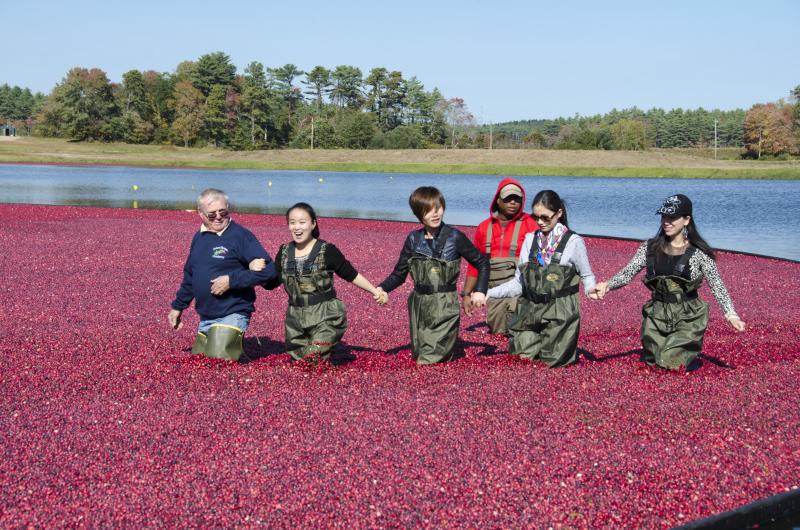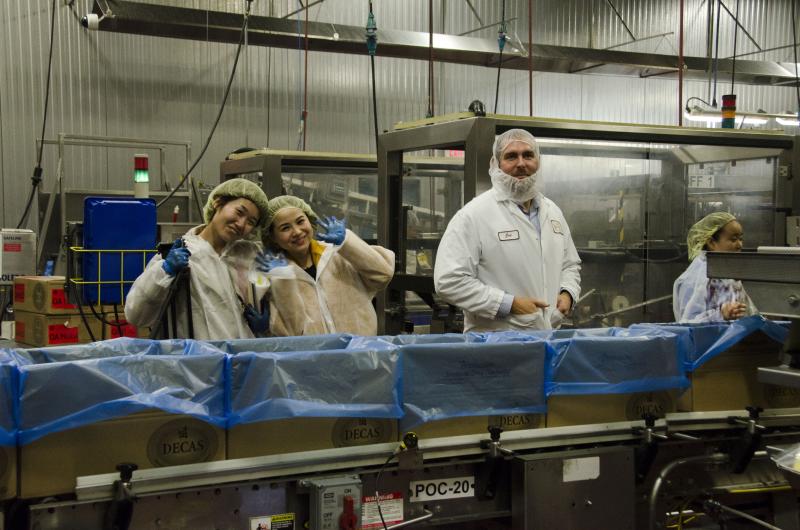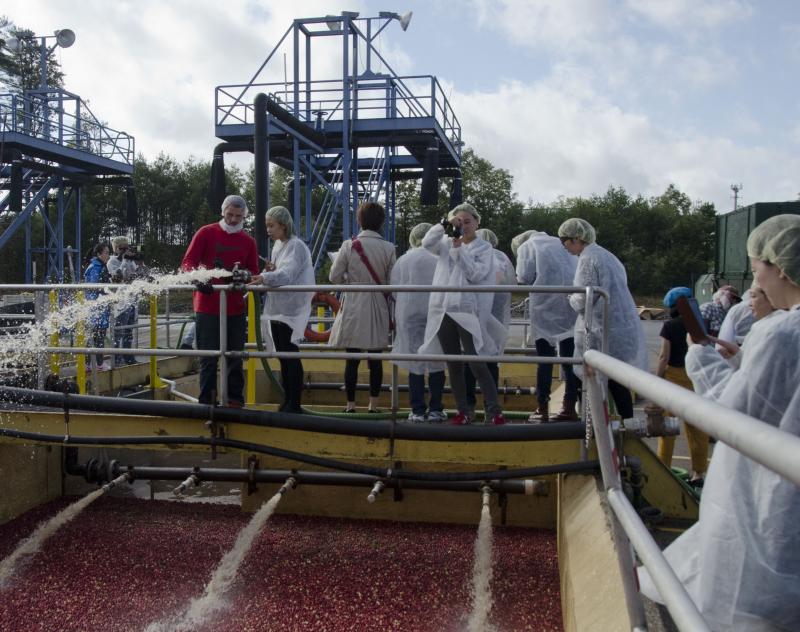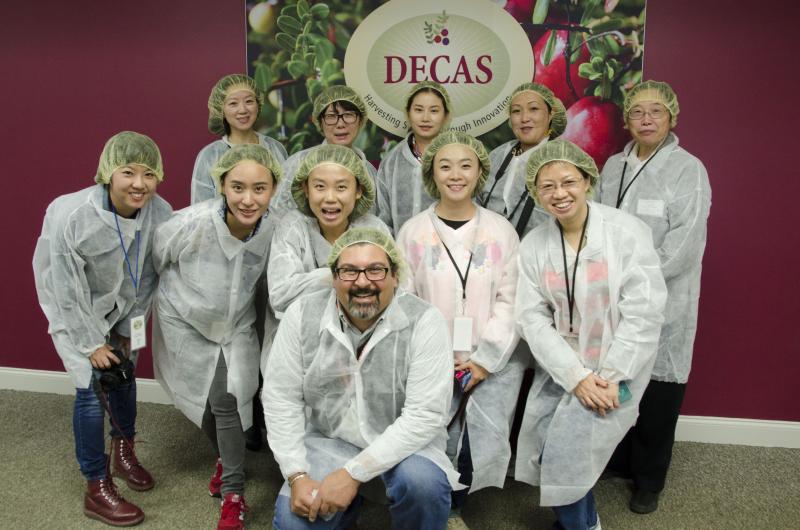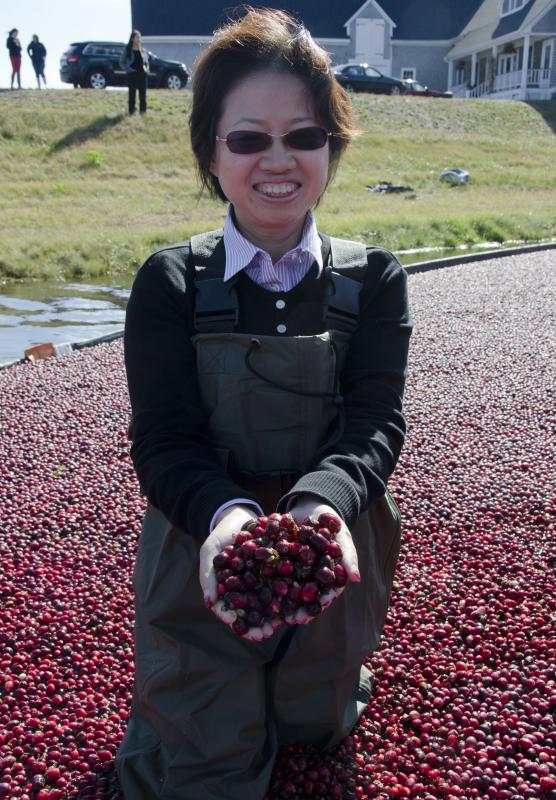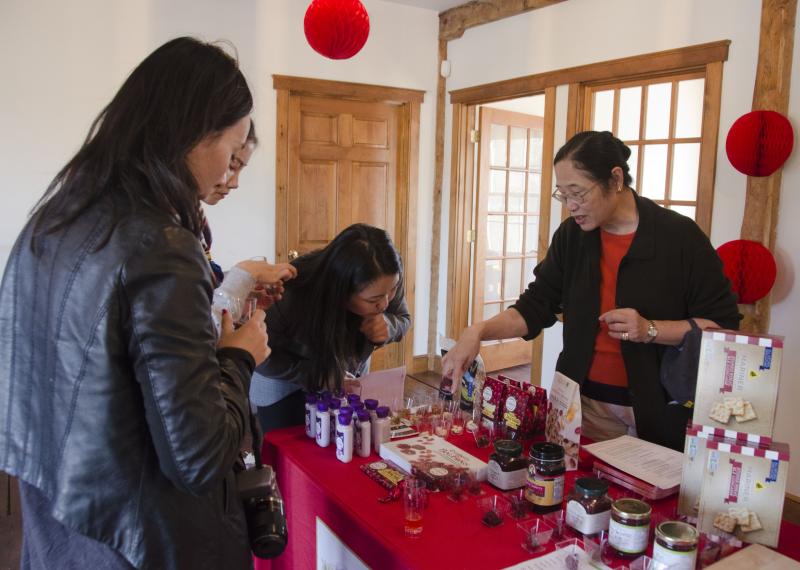Chinese press gets an introduction to cranberry industry
Cranberries are still a new product in China, but Yuebo Hu’s two-year-old son is an early adopter.
“He eats them every morning for breakfast,” said Hu, holding up a picture of him with a cup of dried sweetened cranberries.
Hu, a journalist from the Chinese edition of Women’s Health magazine, is part of a media delegation that spent two days last week learning the cranberry industry “from bog to table” so they can help educate the public on the new export.
Scott Soares, executive director of the Cranberry Marketing Committee, based in Wareham, began promoting the little red berries in China in January 2013.
“China is a relatively new market for us,” he said. “We’re trying to work on the trade side and the public relations side.”
By inviting ten popular media professionals and social media mavens, Soares is looking to get the word out to the country’s 1.3 billion residents about cranberries.
In addition to Hu, popular food blogger Pan Pan Mao joined the group, as did a team producing a 20-minute video on cranberries for the Hunan Province show “The World Is Fun,” which has a viewership of more than 120 million people.
Jiating Shen, an active Instagramer (@judyshine), won a place on the trip after her cranberry muffin recipe got the top votes in an online contest.
On Wednesday morning, the group saw where many of those products are processed with a tour at the Decas Cranberry headquarters in Carver. The Chinese toured the facility, learned the ins and outs of processing cranberries, met owner John Decas and got a chance to try the company’s products.
“Hen hao chi! (This tastes really good!)” exclaimed TV host Xiaoya Wang as she sampled a dried cranberry.
While some of the products were new to the group, all of them had some introduction to cranberries. In addition to dried cranberries, the Chinese market has juice and frozen products and a new cranberry powder that is available as a health supplement.
The nutritional benefits of the berries are a big selling point for the Chinese, said Hu.
She tried her first cranberry four years ago when a relative brought some home after visiting the US. Now she purchases organic cranberry juice at 140 yuan, a steep $23 a bottle.
Many cranberry products in China are still expensive, said Soares, as the product is available in limited quantities. Fortunately, the US has extra berries, something the Cranberry Marketing Committee evaluated before approaching the Chinese market.
“But that’s kind of the silver lining about having a lot of supply,” he said. “It’s going to make it more accessible, more available and more regularly available.”
The export is gaining popularity quickly. Last year, the US exported 2.5 million pounds of cranberries to China. This year, that number has more than doubled to 6 million pounds. To encourage that growth, the Cranberry Marketing Committee wants to teach the Chinese how they can use the berries.
“What we’re really trying to highlight on this trip is the versatility of cranberries,” he said. “We also want to give them a look at what it means to grow and harvest cranberries.”
Soares is hopeful that exports will continue to increase, and he said he isn’t worried that the Chinese will one day decide to grow their own cranberries, at least not on a large scale.
“Because of what cranberries require as a resource to grow, they would compete with rice production,” he said. “Rice is a much more important crop.”
The color doesn’t hurt either.
“It works really well in China because of its natural red color,” said Soares.
For their second day in the area, the group will visit Ocean Spray, hear from industry experts and tour a bog during harvest at Federal Furnace Cranberry Company.
